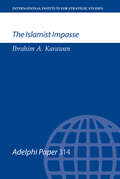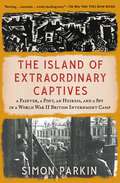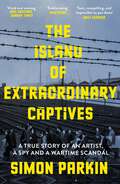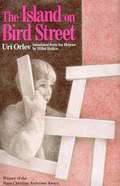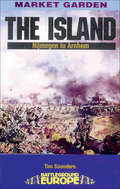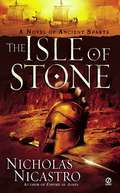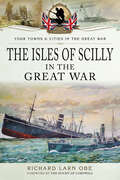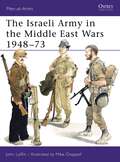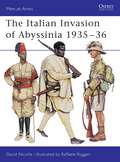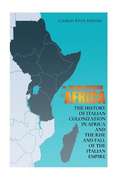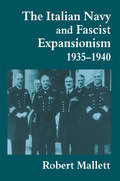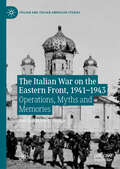- Table View
- List View
The Islamist Impasse (Adelphi series)
by Ibrahim KarawanSince the mid-1970s, Islamist groups have been important opposition forces in the Arab world and have posed a considerable challenge to regimes. However, their increased influence has not led to political power. Ibrahim A. Karawan argues that Islamist movements have been unable to form an effective and united opposition, and have therefore reached an impasse. Although regimes cannot afford to ignore their Islamist challengers, the Arab world is unlikely to witness a wave of Islamist take-overs. More than 17 years after the fall of the Shah, the Iranian revolution remains an isolated case in the Middle East. The growth of Islamism is fuelled by social, economic and political discontent. Islamist movements are not passing phenomena, but the actual political threat they pose will depend mainly on their ability to form broad coalitions, and on the willingness of regimes to introduce badly needed reforms. However, Islamist movements are divided over key issues of strategy and tactics. Regimes have exploited these divisions to contain their Islamist opponents, and have blended oppression and limited political accommodation to perpetuate their rule. Despite Islamist groups’ transnational language and ideology, national and sub-national issues drive their actions. Region-wide developments – notably the ‘oil revolution’ of the 1970s and Arab military defeats by Israel – are important in understanding the overall political climate, but they will not be crucial in deciding the outcome of the Islamist–regime confrontation. The influence of the West on Arab Islamism is also unlikely to be decisive. Islamist activism is stronger in areas with greater exposure to Western influences. States are therefore keen not to be seen as being too close to Western powers. In addition, there is no one Western stance towards Islamist movements, nor is there a unified assessment of the causes and policy implications of their resurgence. Contentious political issues confront Western powers, such as linking economic aid to human rights. Political and militant movements operating under the banner of Islamism are diverse. Their deep differences over the best means to achieve their objectives fragment their ranks and undermine their effectiveness. Although Arab regimes face many challenges, they have shown greater political resilience than analysts have expected.
The Island of Extraordinary Captives: A Painter, a Poet, an Heiress, and a Spy in a World War II British Internment Camp
by Simon ParkinThe &“riveting…truly shocking&” (The New York Times Book Review) story of a Jewish orphan who fled Nazi Germany for London, only to be arrested and sent to a British internment camp for suspected foreign agents on the Isle of Man, alongside a renowned group of refugee musicians, intellectuals, artists, and—possibly—genuine spies.Following the events of Kristallnacht in 1938, Peter Fleischmann evaded the Gestapo&’s roundups in Berlin by way of a perilous journey to England on a Kindertransport rescue, an effort sanctioned by the UK government to evacuate minors from Nazi-controlled areas.train. But he could not escape the British police, who came for him in the early hours and shipped him off to Hutchinson Camp on the Isle of Man, under suspicion of being a spy for the very regime he had fled. During Hitler&’s rise to power in the 1930s, tens of thousands of German and Austrian Jews like Peter escaped and found refuge in Britain. After war broke out and paranoia gripped the nation, Prime Minister Winston Churchill ordered that these innocent asylum seekers—so-called &“enemy aliens&”—be interned. When Peter arrived at Hutchinson Camp, he found one of history&’s most astounding prison populations: renowned professors, composers, journalists, and artists. Together, they created a thriving cultural community, complete with art exhibitions, lectures, musical performances, and poetry readings. The artists welcomed Peter as their pupil and forever changed the course of his life. Meanwhile, suspicions grew that a real spy was hiding among them—one connected to a vivacious heiress from Peter&’s past. Drawing from unpublished first-person accounts and newly declassified government documents, award-winning journalist Simon Parkin reveals an &“extraordinary yet previously untold true story&” (Daily Express) that serves as a &“testimony to human fortitude despite callous, hypocritical injustice&” (The New Yorker) and &“an example of how individuals can find joy and meaning in the absurd and mundane&” (The Spectator).
The Island of Extraordinary Captives: A True Story of an Artist, a Spy and a Wartime Scandal
by Simon ParkinA gripping untold war story: using exclusive new archive material, letters and diaries, this is the story of the prisoners of war in internment camps during the Second World War.The police came for Peter Fleischmann in the early hours. It reminded the teenager of the Gestapo's moonlit roundups he had narrowly avoided at home in Berlin. Now, having endured a perilous journey to reach England - hiding from the rampaging Nazi thugs at his orphanage, boarding a Kindertransport to safety - here the aspiring artist was, on a ship bound for the Isle of Man, suspected of being a Nazi spy. What had gone wrong?In May 1940, faced with a country gripped by paranoia, Prime Minister Winston Churchill ordered the internment of all German and Austrian citizens living in Britain. Most, like Peter, were refugees who had come to the country to escape Nazi oppression. They were now imprisoned by the very country in which they had staked their trust. Painstakingly researched from dozens of unpublished first-hand accounts and previously classified documents, The Island of Extraordinary Captives tells, for the first time, the story of history's most astonishing internment camp and of how a group of world-renown artists, musicians and academics came to be seen as 'enemy aliens'. The Island of Extraordinary Captives is the story of a battle between fear and compassion at a time of national crisis. It reveals how Britain's treatment of refugees during the Second World War led to one of the nation's most shameful missteps, and how hope and creativity can flourish in even the most challenging circumstances.(P) 2022 Hodder & Stoughton Limited
The Island of Extraordinary Captives: A True Story of an Artist, a Spy and a Wartime Scandal
by Simon Parkin*An OBSERVER, TABLET, NEW STATESMAN and GUARDIAN SATURDAY MAGAZINE "Books of 2022" pick *The police came for Peter Fleischmann in the early hours. It reminded the teenager of the Gestapo's moonlit roundups he had narrowly avoided at home in Berlin. Now, having endured a perilous journey to reach England - hiding from the rampaging Nazi thugs at his orphanage, boarding a Kindertransport to safety - here the aspiring artist was, on a ship bound for the Isle of Man, suspected of being a Nazi spy. What had gone wrong?In May 1940, faced with a country gripped by paranoia, Prime Minister Winston Churchill ordered the internment of all German and Austrian citizens living in Britain. Most, like Peter, were refugees who had come to the country to escape Nazi oppression. They were now imprisoned by the very country in which they had staked their trust. Painstakingly researched from dozens of unpublished first-hand accounts and previously classified documents, The Island of Extraordinary Captives tells, for the first time, the story of history's most astonishing internment camp and of how a group of world-renown artists, musicians and academics came to be seen as 'enemy aliens'. The Island of Extraordinary Captives is the story of a battle between fear and compassion at a time of national crisis. It reveals how Britain's treatment of refugees during the Second World War led to one of the nation's most shameful missteps, and how hope and creativity can flourish in even the most challenging circumstances.
The Island on Bird Street
by Uri Orlev Hillel HalkinThe Second World War is raging. Times are very bad in Poland, especially for Jews, and Alex is one of them. Alone, Alex is forced to take refuge in an abandoned building at 78 Bird Street.<P><P> Jane Addams Children’s Book Award Honor Book
The Island: Nijmegen to Arnhem (Battleground Europe)
by Tim SaundersHaving fought their way up fifty miles of Hell's Highway and through Nijmegen, XXX Corps was just ten miles from Arnhem and the 1st British Airborne Division. Here it found itself on an island of flat land between the Waal at Nijmegen and the Rhine at Arnhem. The situation was increasingly bad with the remainder of II SS Panzer Corps in the area and German counter attacks on Hell's Highway preventing the Allies applying their material superiority. The Guards Armoured and then 43rd Wessex Infantry Division took turns to lead before reaching the Rhine opposite the paratroopers in the Oosterbeek Perimeter. Attempts to cross the Rhine by the Polish Paras and the Dorset Regiment had little success, but meanwhile, the guns of XXX Corps ensured the survival of the Perimeter. After some desperate fighting on the island, 43rd Wessex Division evacuated just two thousand members of the elite Airborne Division who had landed eight days earlier.
The Isle of Stone
by Nicholas NicastroWith vivid prose and unswerving attention to historical detail, the author of "Empire of Ashes" spins a tale of two brothers who rise through Spartan society and meet their fate--surrounded by the Athenian navy on the barren island of Sphacteria.
The Isles of Scilly in the Great War (Your Towns & Cities in the Great War)
by Richard LarnThe Isles of Scilly, five inhabited islands 24 miles west of Land’s End, were of low priority to the War Department when the First World War was declared. With no manufacturing capability, no industry other than flower growing and agriculture, no electricity or gas, no mains water supply, no wireless station, and a population of only 2,000, the islands did have one feature in their favor – their location. Sitting at the cross roads of six major shipping routes, Scilly had been a recognized ‘ship-park’ since 1300AD, where sailing ships anchored to safety awaiting a suitable wind, to re-victual, pick up water or effect repairs. The Admiralty sought to make it a harbor for the Channel Fleet in the mid-1800s, and in 1903 spent £25,000 defending the islands with 6-inch gun batteries, only to take them away seven years later. When, in 1915, German U-boats moved from the North Sea into the Western Approaches, sinking large numbers of merchant vessels, Scilly was chosen to become a Royal Navy Auxiliary Patrol Station, and over time was sent 20 armed trawlers and drifters as escorts, mine-sweepers, mine-layers or anti-submarine vessels, along with 500 Royal Navy personnel. In 1917 Tresco Island became a Royal Naval Air Station, with 14 flying boats and over 1,000 personnel. The islands were suddenly at the forefront of the submarine war. This book details Scilly's contribution to the war effort, with attention to its civilian population, the heartbreak of losing forty-five of its sons, and the trauma of countless seamen rescued from torpedoed ships.
The Ismaili Assassins: A History of Medieval Murder
by James Waterson&“A fascinating history . . . The Medieval conflict between Christians and Muslims has many similarities to the Middle East today.&”—Firetrench The Ismaili Assassins were an underground group of political killers who were ready to kill Christians and Muslims alike with complete disregard for their own lives. Under the powerful control of an enigmatic grand master, these devoted murderers often slayed their victims in public, cultivating their terrifying reputation. They assumed disguises and their weapon of choice was a dagger. The dagger was blessed by the grand master and killing with it was a holy and sanctified act; poison or other methods of murder were forbidden to the followers of the sect. Surviving a mission was considered a deep dishonor and mothers rejoiced when they heard that their Assassin sons had died having completed their deadly acts. Unsurprisingly, their formidable reputation spread far and wide. In 1253, the Mongol chiefs were so fearful of them that they massacred and enslaved the Assassins&’ women and children in an attempt to liquidate the sect. The English monarch, Edward I, was nearly dispatched by their blades and Richard the Lionheart&’s reputation was sullied by his association with the Assassins&’ murder of Conrad of Montferrat.The Ismaili Assassins explores the origins, actions and legacy of this notorious sect. Enriched with eyewitness accounts from Islamic and Western sources, this important book unlocks the history of the Crusades and the early Islamic period, giving the reader entry into a historical epoch that is thrilling and pertinent. &“An inherently fascinating, deftly written, and impressively informative read from beginning to end.&”—Midwest Book Review
The Israeli Army in the Middle East Wars 1948-73
by Mike Chappell John LaffinIsrael assumes in advance that defeat in war means an end to the Jewish nation, and it wages war accordingly. This fact influences the Israeli approach to its army and to the strategy, tactics, training and conduct of war. Surrounded by hostile nations, Israel has fought six victorious wars between 1948 and 1973. For a force which began as an irregular, impoverished and improvised group, this is a formidable record. Backed by plenty of photographs and eight full page colour plates, this fine text examines the six wars fought between 1948-73, including the extraordinary Israeli victory of 1967.
The Israeli Military and the Origins of the 1967 War: Government, Armed Forces and Defence Policy 1963–67 (Middle Eastern Military Studies)
by Ami GluskaThis new book looks at the relationship between the Israeli armed forces, the government, and the origins of the 1967 War. Ami Gluska discusses the effect of the Israel Defense Forces (IDF) on Israel’s defense policy between 1963-1967 against the backdrop of the developments in the Middle East. In addition, he describes in detail the decision-making process leading to the Arab-Israeli Six Day War in June 1967 through the prism of the relations between the military and political echelons. He shows how the Six Day War was a watershed event in the Middle-Eastern conflict and had a profound effect on the development of the Palestinian problem and the character of the State of Israel over the past four decades. This book will be of great interest to students of Middle Eastern politics, strategic studies, Israeli politics and military history in general.
The Italian Army and the First World War
by John GoochThis is a major new account of the role and performance of the Italian army during the First World War. Drawing from original, archival research, it tells the story of the army's bitter three-year struggle in the mountains of Northern Italy, including the eleven bloody battles of the Isonzo, the near-catastrophic defeat at Caporetto in 1917 and the successful, but still controversial defeat of the Austro-Hungarian army at Vittorio Veneto on the eve of the Armistice. Setting military events within a broader context, the book explores pre-war Italian military culture and the interactions between domestic politics, economics and society. In a unique study of an unjustly neglected facet of the war, John Gooch illustrates how General Luigi Cadorna, a brutal disciplinarian, drove the army to the edge of collapse, and how his successor, general Armando Diaz, rebuilt it and led the Italians to their greatest victory in modern times.
The Italian Army in Slovenia
by Elizabeth Burke Anthony MajanlahtiThis powerful study offers a vivid and often disturbing account of the Italian army's occupation of Slovenia during World War II. It moves from the decision of the Italians to annex Slovenia in 1941, through local resistance and brutal reaction against civilians, to the army's ultimate collapse following Italy's defection from the Axis.
The Italian Army of World War I
by David Nicolle Raffaele RuggeriThe dilemma of the young Italian kingdom and the experience of her army in World War I (1914-1918) were unique among the combatant nations. Late to enter the war against the Central Powers, she faced a massively defended Austro-Hungarian front in the north, including strong mountain features, as well as distractions in the Balkans and a simultaneous rebellion in her Libyan colony. Costly and repeated battles on the Isonzo front culminated in the disaster of Caporetto in October 1917, followed by a remarkable revival and eventual victory in 1918. This concise study describes and illustrates the Italian Army's campaigns, organisation, uniforms, weapons and equipment - including the famous 'death companies' and Arditi assault troops.
The Italian Ballerina: A World War II Novel
by Kristy CambronAt the height of the Nazi occupation of Rome, an unlikely band of heroes comes together to save innocent lives in this breathtaking World War II novel based on real historical events.Rome, 1943. With the fall of Italy&’s Fascist government and the Nazi regime occupying the streets of Rome, British ballerina Julia Bradbury is stranded and forced to take refuge at a hospital on Tiber Island. But when she learns of a deadly sickness sweeping through the quarantine wards—a fake disease known only as Syndrome K—she is drawn into one of the greatest cons in history. Alongside hospital staff, friars of the adjoining church, and two Allied medics, Julia risks everything to rescue Jewish Italians from the deadly clutches of the Holocaust. Soon a little girl who dreams of becoming a ballerina arrives at their door, and Julia is determined to reunite the young dancer with her family—if only she would reveal one crucial secret: her name.Present Day. Delaney Coleman recently lost her grandfather—a beloved small-town doctor and World War II veteran, so she returns home to help her aging parents. When a mysterious Italian woman reaches out claiming to own one of the family&’s precious heirlooms, Delaney is compelled to travel to Italy and uncover the truth of her grandfather&’s hidden past. With the help of the woman&’s skeptical but charming grandson, Delaney learns of a Roman hospital that saved hundreds of Jewish people during the war. Soon, everything Delaney thought she knew about her grandfather comes into question.Based on true accounts of the invented Syndrome K sickness, The Italian Ballerina journeys from the Allied storming of the beaches at Salerno to the London ballet stage and the war-torn streets of World War II Rome, exploring the sometimes heart-wrenching choices we must make to find faith and forgiveness, and how saving a single life can impact countless others.Split timeline: WWII and present dayStand-alone novelBook length: approximately 107,000 wordsIncludes discussion questions for book clubs
The Italian Campaign, 1943–1945 (Images of War)
by Philip JowettThe Second World War Italian campaign is often less well remembered than the struggle of the Germans against the western Allies in north-west Europe and against the Soviet Union in the east. But, as this book demonstrates in over 300 photographs, the Italian peninsula was a major theater of the war in itself. More than a million Allied troops fought there, more than half a million Germans and Italians; there were over 600,00 casualties and well over 100,000 dead. The soldiers of many nations took part – Americans, Australians, Brazilians, British, Canadians, French, Germans, Greeks, Indians, Italians, Poles, South Africans – in a grueling and protracted sequence of battles across rocky, mountainous terrain that made a mockery of Churchill’s description of it as the ‘soft underbelly’ of occupied Europe. Every stage of the campaign is represented in the photographs – from the Allied landings in Sicily in 1943, through the tenacious defense by the Germans of a series of fortified lines as the Allies struggled north, to the final Allied advance across the Po in April 1945 and the German surrender. As well as showing the soldiers on all sides and the towns and Italian landscapes in which the fighting took place, the photographs record the appalling devastation the warfare left in its wake.
The Italian Crusade to Germany in 1546: Pope Paul III's Campaign Against the Lutherans
by Petr VorelThis book explores a significant historical event in sixteenth-century European history. The Italian crusade against the German Lutherans in 1546 was, for many reasons, the catalyst for the military phase of the Lutheran opposition in Germany's clash with Emperor Charles V (1546-1555). Contributing to literature which has generally interpreted the conflict between Charles V and the Roman-German Empire as an internal German affair, this book highlights the military involvement and participation of Pope Paul III in the initial phase of the so-called Schmalkaldic War, which took place from 1546-1547. Rather than the papal army acting peripherally through 'auxiliary military contingents' as it had done in previous years, the author argues that the Pope was directly involved in the war, sending a large army from Rome to suppress the heretical movement. Outlining the technical advance of the papal army while still on Italian territory, its campaign across the Alps into Germany, and its military activities in the early stages of the war, this book provides a new perspective on the diplomatic negotiations that led to the imperial-papal alliance in 1546. It sheds light on the development of the crusade and its eventual failure, illustrating the worsening relationship between the Pope and the Emperor, and its influence on subsequent political development.
The Italian Executioners: The Genocide of the Jews of Italy
by David I. Kertzer Simon Levis Sullam Oona Smyth Claudia PataneA gripping revisionist history that shows how ordinary Italians played a central role in the genocide of Italian Jews during the Second World WarIn this gripping revisionist history of Italy’s role in the Holocaust, Simon Levis Sullam presents an unforgettable account of how ordinary Italians actively participated in the deportation of Italy’s Jews between 1943 and 1945, when Mussolini’s collaborationist republic was under German occupation. While most historians have long described Italians as relatively protective of Jews during this time, The Italian Executioners tells a very different story, recounting in vivid detail the shocking events of a period in which Italians set in motion almost half the arrests that sent their Jewish compatriots to Auschwitz.This brief, beautifully written narrative shines a harsh spotlight on those who turned on their Jewish fellow citizens. These collaborators ranged from petty informers to Fascist intellectuals—and their motives ran from greed to ideology. Drawing insights from Holocaust and genocide studies and combining a historian’s rigor with a novelist’s gift for scene-setting, Levis Sullam takes us into Italian cities large and small, from Florence and Venice to Brescia, showing how events played out in each. Re-creating betrayals and arrests, he draws indelible portraits of victims and perpetrators alike.Along the way, Levis Sullam dismantles the seductive popular myth of italiani brava gente—the “good Italians” who sheltered their Jewish compatriots from harm. The result is an essential correction to a widespread misconception of the Holocaust in Italy. In collaboration with the Nazis, and with different degrees and forms of involvement, the Italians were guilty of genocide.
The Italian Girl
by Anita AbrielA fearless young Italian woman risks everything to save precious artworks from the Nazis in a gripping new tale from the bestselling author of The Light After the War. Rome, 1943: Marina Tozzi adores her father Vittorio and working together in his art gallery is her only escape from the reality of the Nazi occupation. Not only has Marina inherited her father&’s passion for art but she is earning a reputation as an expert in her own right. However, Vittorio is keeping a deadly secret from his daughter. He has been hiding a Jewish artist in their basement and one day Marina returns home to find her father has been brutally murdered by a German officer. Devastated, Marina flees to Florence to seek help from a man who owes Vittorio his life. Renowned American art expert Bernard Berenson offers Marina sanctuary in his villa outside Florence and a job cataloguing his vast art library. Marina is grateful but she is determined to find a way to avenge her father. When handsome young artist Carlos proposes using her expertise to help the partisan cause against the Nazis, she has at last found her purpose. In one daring and ingenious act, Marina risks her life to save a priceless painting from falling into Nazi hands and proves her worth to the partisans. But falling in love with Carlos was not part of her plan. When Carlos suddenly disappears, Marina&’s dreams about building a life with him after the war turn to ashes. She will have to travel halfway around the world to unravel the past – and find her future.Praise for Anita Abriel &‘I was utterly moved and transfixed&’ Kristin Harmel &‘Fans of historical fiction won&’t want to miss this evocative, heartbreaking story&’ Beatriz Williams &‘Beautifully written and heartfelt&’ Jillian Cantor
The Italian Invasion of Abyssinia 1935-36
by David Nicolle Raffaele RuggeriThe Second Italo-Abyssinian War began in October 1935, when Mussolini ordered the invasion of Ethiopia from Italian-held Eritrea and Somaliland, thinking that he would easily crush an ill-prepared and badly equipped enemy. The Italians, in the face of widespread condemnation from the League of Nations, spread terror and destruction through their indiscriminate use of air power and poison gas against an enemy more used to Medieval methods of warfare. David Nicolle examines in detail the units, equipment and uniforms of the forces on both sides of this conflict that unrealistically bolstered Il Duce's colonial ambitions. A great read ably supported by Raffaele Ruggeri's detailed full-page colour plates.
The Italian Invasion of Africa: The History of Italian Colonization in Africa and the Rise and Fall of the Italian Empire
by Charles River EditorsWhen World War II broke out, Italy’s alignment with Nazi Germany meant that Italian possessions in Africa would turn the region into a crucial theater at the start of the war, and ultimately, the Italians’ inability to stave off the Allies in Africa would lead to further German involvement there, at a time when Hitler could least afford to draw resources away from the fight against the Soviets. All of it would culminate in one of the most famous battles of the war at El Alamein, pitting the legendary Desert Fox, Erwin Rommel, against the British.
The Italian Navy and Fascist Expansionism, 1935-1940 (Cass Series: Naval Policy and History #No. 7)
by Robert MallettRobert Mallett argues that the Duce's aggressive war against the Mediterranean powers, Britain and France, was to secure access to the world's oceans. Mussolini actively pursued the Italo-German alliance to gain a Fascist empire stretching from the Mediterranean to the Indian Ocean.
The Italian Resistance: Fascists, Guerrillas And The Allies
by Tom BehanOne of the enduring myths about World War Two is that only the Allies liberated occupied Europe. Many countries had anti-fascist Resistance movements, and Italy's was one of the biggest and most politically radical yet it remains relatively unknown outside of its own homeland. <p><p> Within Italy many plaques and streets commemorate the actions of the partisans - a movement from below that grew as Mussolini's dictatorship unravelled. Led by radical left forces, the Resistance trod a thin line between fighting their enemies at home and maintaining an uneasy working relationship with the Allies. <p> Essential for courses on World War Two and European history, Tom Behan uses unpublished archival material and interviews with surviving partisans to tell an inspiring story of liberation.
The Italian War on the Eastern Front, 1941–1943: Operations, Myths and Memories (Italian and Italian American Studies)
by Bastian Matteo SciannaThe Italian Army’s participation in Hitler’s war against the Soviet Union has remained unrecognized and understudied. Bastian Matteo Scianna offers a wide-ranging, in-depth corrective. Mining Italian, German and Russian sources, he examines the history of the Italian campaign in the East between 1941 and 1943, as well as how the campaign was remembered and memorialized in the domestic and international arena during the Cold War. Linking operational military history with memory studies, this book revises our understanding of the Italian Army in the Second World War.
The Italian Wars 1494-1559: War, State and Society in Early Modern Europe
by Christine Shaw Michael Edward MallettThe Italian Wars of 1494-1559 had a major impact on the whole of Renaissance Europe. In this important text, Michael Mallett and Christine Shaw place the conflict within the political and economic context of the wars. Emphasising the gap between aims and strategies of the political masters and what their commanders and troops could actually accomplish on the ground, they analyse developments in military tactics and the tactical use of firearms and examine how Italians of all sectors of society reacted to the wars and the inevitable political and social change that they brought about. The history of Renaissance Italy is currently being radically rethought by historians. This book is a major contribution to this re-evaluation, and will be essential reading for all students of Renaissance and military history.
